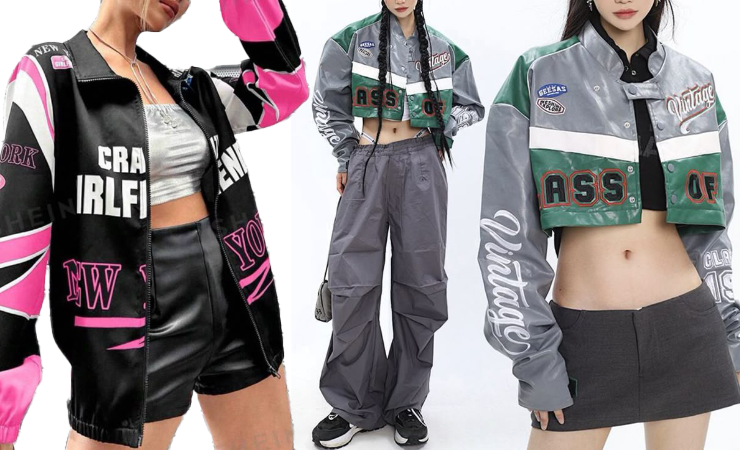Japanese drift culture is more than just an underground motorsport—it is a full-blown lifestyle that has influenced music, movies, and, most notably, fashion. Born from the winding mountain roads of Japan and the rebellious spirit of the country’s car enthusiasts, drift culture blends speed with style, creating a visually distinct aesthetic that has left an indelible mark on streetwear. From neon-lit designs to workwear-inspired gear, the influence of drifting is visible on city streets as much as on the tracks.
The Aesthetic of Motion

Drifting is about control in chaos, a philosophy that has extended into fashion. The kinetic energy of drifting is reflected in streetwear through bold graphics, oversized silhouettes, and high-contrast color palettes. Clothing that mirrors the movement of a car in full drift—loose-fitting pants, flowing jackets, and aerodynamic designs—has become a hallmark of this style. Brands like A Bathing Ape (BAPE), Wacko Maria, and Neighborhood have embraced this aesthetic, often incorporating racing stripes, sponsor-style patches, and vibrant hues reminiscent of Tokyo’s neon-lit highways.
Neon Lights and Retro Tech

Neon plays a crucial role in drift culture, from underglow kits illuminating street racers to the dazzling cityscapes of Tokyo. This obsession with bright, artificial lighting has seeped into fashion through iridescent materials, reflective elements, and fluorescent colorways. Jackets with high-visibility strips, sneakers with glow-in-the-dark soles, and graphic tees with holographic prints reflect this aesthetic, making the wearer stand out like a modified Nissan Skyline cruising through the Shuto Expressway.
Utilitarian Meets Subculture

A major component of drift culture is its DIY ethos, with drivers modifying their cars in home garages, tuning engines, and customizing exteriors. This hands-on approach is mirrored in the fashion world through utilitarian and workwear-inspired streetwear. Cargo pants with multiple pockets, mechanic-style jumpsuits, and heavy-duty boots are staples, offering both function and fashion. Japanese brands like WTAPS and Evisu, known for their rugged, workwear-based designs, exemplify this drift-influenced aesthetic.
Logomania and Racing Sponsorships

Racing culture thrives on sponsorship, and drift cars are often plastered with logos from automotive brands, tuning shops, and energy drink companies. This has translated into a love for bold branding in street fashion. Graphic-heavy designs, oversized brand logos, and sponsor-style typography have become a core part of the drift-inspired wardrobe. This logomania is evident in collections from brands like Supreme and Cav Empt, where corporate aesthetics blend with underground rebellion.
Footwear: Speed and Grip

Drifting demands precise footwork, and the choice of footwear in this subculture reflects both performance and style. Sneakers inspired by motorsports—featuring streamlined shapes, durable materials, and grip-enhancing soles—are a common sight. Brands like Puma, Adidas, and Nike have capitalized on this influence with collections featuring low-profile racing shoes and futuristic sneakers reminiscent of driving gear. The popularity of high-top sneakers and sock-like fits further nods to the need for mobility and comfort, echoing the demands of drift racing.
Anime, Arcades, and Street Style

Japanese pop culture, particularly anime and video games, has played a major role in shaping the aesthetics of drift-inspired fashion. Titles like Initial D, which introduced audiences to the underground world of drifting, have influenced clothing designs featuring anime-style graphics, manga panel prints, and vintage arcade-inspired motifs. This fusion of motorsport and media has given birth to a unique hybrid of nostalgic yet futuristic streetwear that continues to gain global traction.
From the Streets to the Runway

While initially rooted in Japan’s underground scene, the drift aesthetic has steadily made its way into high fashion. Luxury designers have taken inspiration from the world of drifting, incorporating motorsport themes into their collections. Labels like Off-White, Balenciaga, and Prada have released pieces featuring racing stripes, technical fabrics, and asymmetric designs, proving that what once belonged to the garages and highways of Japan now commands space on the runway.
Japanese drift culture is not just about cars—it is a movement that embodies speed, rebellion, and self-expression. This ethos has transcended the racetrack, shaping a streetwear aesthetic that celebrates neon lights, functional design, and bold graphics. Through the oversized silhouettes, sponsor-laden prints, and footwear built for movement, the legacy of drifting lives on in the wardrobes of fashion enthusiasts worldwide. As the lines between motorsport and fashion continue to blur, the influence of Japanese drift culture on streetwear is only set to accelerate further.



